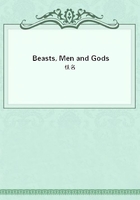
第88章 IN THE BLISSFUL GARDEN OF A THOUSAND JOYS(2)
"Do you hear it?" the Lama asked. "These are precious stones and bits of gold, the entrails of the god. This is the reason why the conquerors at once break up the statues of the gods. Many famous precious stones have appeared from the interior of the statues of the gods in India, Babylon and China."Some rooms were devoted to the library, where manuscripts and volumes of different epochs in different languages and with many diverse themes fill the shelves. Some of them are mouldering or pulverizing away and the Lamas cover these now with a solution which partially solidifies like a jelly to protect what remains from the ravages of the air. There also we saw tablets of clay with the cuneiform inscriptions, evidently from Babylonia; Chinese, Indian and Tibetan books shelved beside those of Mongolia; tomes of the ancient pure Buddhism; books of the "Red Caps" or corrupt Buddhism; books of the "Yellow" or Lamaite Buddhism; books of traditions, legends and parables. Groups of Lamas were perusing, studying and copying these books, preserving and spreading the ancient wisdom for their successors.
One department is devoted to the mysterious books on magic, the historical lives and works of all the thirty-one Living Buddhas, with the bulls of the Dalai Lama, of the Pontiff from Tashi Lumpo, of the Hutuktu of Utai in China, of the Pandita Gheghen of Dolo Nor in Inner Mongolia and of the Hundred Chinese Wise Men. Only the Bogdo Hutuktu and Maramba Ta-Rimpo-Cha can enter this room of mysterious lore. The keys to it rest with the seals of the Living Buddha and the ruby ring of Jenghiz Khan ornamented with the sign of the swastika in the chest in the private study of the Bogdo.
The person of His Holiness is surrounded by five thousand Lamas.
They are divided into many ranks from simple servants to the "Councillors of God," of which latter the Government consists.
Among these Councillors are all the four Khans of Mongolia and the five highest Princes.
Of all the Lamas there are three classes of peculiar interest, about which the Living Buddha himself told me when I visited him with Djam Bolon.
"The God" sorrowfully mourned over the demoralized and sumptuous life led by the Lamas which decreased rapidly the number of fortune tellers and clairvoyants among their ranks, saying of it:
"If the Jahantsi and Narabanchi monasteries had not preserved their strict regime and rules, Ta Kure would have been left without prophets and fortune tellers. Barun Abaga Nar, Dorchiul-Jurdok and the other holy Lamas who had the power of seeing that which is hidden from the sight of the common people have gone with the blessing of the gods."This class of Lamas is a very important one, because every important personage visiting the monasteries at Urga is shown to the Lama Tzuren or fortune teller without the knowledge of the visitor for the study of his destiny and fate, which are then communicated to the Bogdo Hutuktu, so that with these facts in his possession the Bogdo knows in what way to treat his guest and what policy to follow toward him. The Tzurens are mostly old men, skinny, exhausted and severe ascetics. But I have met some who were young, almost boys. They were the Hubilgan, "incarnate gods,"the future Hutuktus and Gheghens of the various Mongolian monasteries.
The second class is the doctors or "Ta Lama." They observe the actions of plants and certain products from animals upon people, preserve Tibetan medicines and cures, and study anatomy very carefully but without making use of vivisection and the scalpel.
They are skilful bone setters, masseurs and great connoisseurs of hypnotism and animal magnetism.